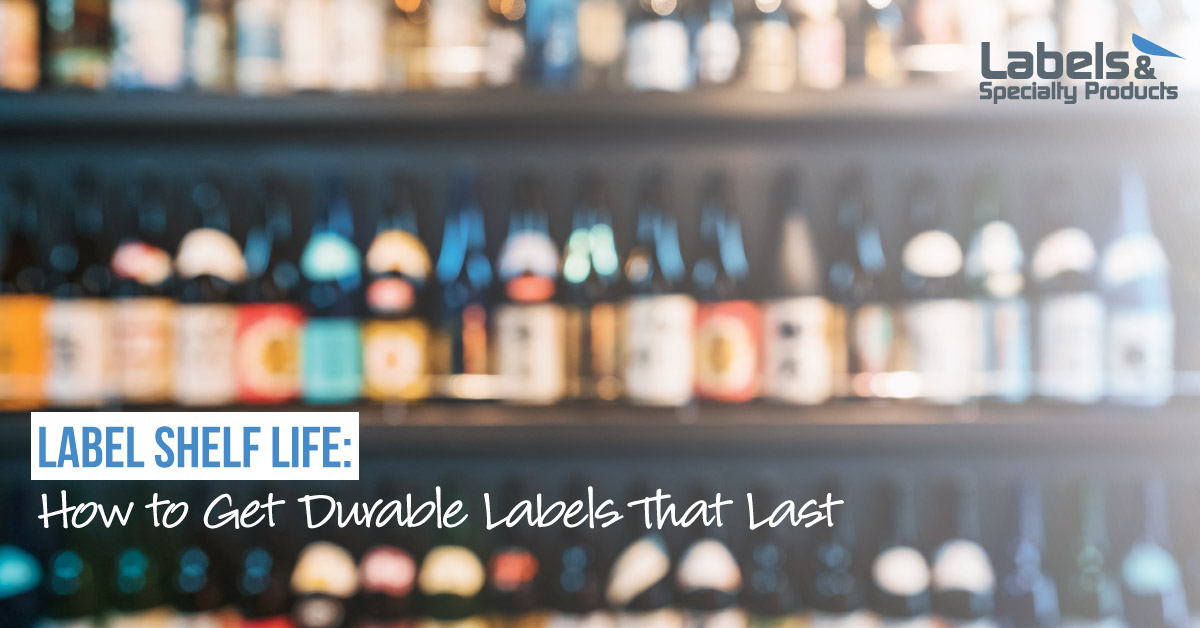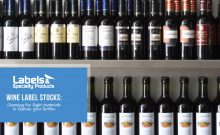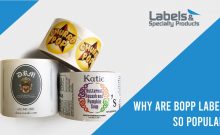The life of a label is far from easy. If it’s not constant squeezing, it’s moisture breaking down your design. If it’s not temperature extremes prying at your adhesive, it’s UV rays slowly fading colors. Durable labels are directly connected to how people view the quality of your product.
Peeled, ripped, or faded labels can work against brands that strive for premium status. For example, makers of fine wine, craft beer, and beauty products have a particular interest in label durability. For these types of packaging, consumers carry high expectations.
In addition to your label’s look, they have an even simpler purpose — share ingredients and nutritional values, display warnings, stick to compliance regulations, and convey brand stories.
That means they have to last. Here are the material factors you need to consider to create durable labels.
Protect Against Direct Sunlight
The biggest challenge to the life of a label is preserving the printed image when it’s exposed to extreme weather conditions. Ultraviolet rays from constant, direct sunlight break down the chemical bonds found in inks. This ultimately leads to a fading or bleaching effect on your label design.
You need the ink on your label to hold up to the rigors of use and exposure. Thankfully, special fade-resistant ink is available with higher-grade pigments that aren’t as easily affected by sunlight.
While you can’t completely safeguard your label from the effects of UV rays, you can protect it with products that work similarly to the way that sunscreen protects skin. Protective varnish is a thin coating of clear silicon applied over the top of your printed label to seal it against the elements. Laminates offer even tougher protection. The thin layer of film acts as a plastic barrier against the effect of sunlight.
Withstand Water and Other Fluids
In the presence of water, paper disintegrates. Although paper stock offers a history of high-end wine bottle design and now includes paper options with higher wet strength, it may not be the most durable choice. On the other hand, synthetic label materials such as BOPP are better matches for refrigerated products (e.g. beer bottles) or bathroom cosmetic products (e.g. shampoo).
Even if your label itself is waterproof, a moisture-resistant label adhesive can prevent the label from falling off the bottle. For example, ice buckets, coolers, and other cold storage units may require a freezer-grade label adhesive in order to achieve durability.
Other health and beauty product labels also require waterproof adhesive to withstand the shower and hot, steamy environments. Oil-based cosmetic products, including sunscreen, require particular label choices since oil prevents adhesives from creating a strong bond. Thankfully, film materials are resistant to oils, which means they won’t soak them up and deteriorate the label’s quality.
Strengthen Against Wear and Tear
Different products will endure handling that could easily degrade the quality of your labels. For example, using the wrong label material on squeezable products won’t entice consumers to buy again. Flexible film materials are designed for products that will be pinched, bent, and squeezed. Other label materials are more likely to peel off, crack, or become defaced over time.
Protective coatings aren’t required on all product labels. However, foregoing an extra layer means you run the risk of scratches, scuffs, and moisture affecting the integrity of the material. Essentially, any form of friction could damage your design.
While some companies shy away from laminates or varnishes because it can alter the look of paper labels, shipping complicates matters and is cause for reconsideration. Bottles and containers can rub up against cardboard and other products. Upon arrival, the labels are not nearly as attractive as they once were.
Choose Customized Adhesive Material
Your container, label material choices, and design each play important roles in marketing your product but the adhesive is literally the glue that holds them all together. Different surfaces like polystyrene, nylon, and EVA make it harder for an adhesive to evenly spread out while others offer great adhesion, such as most metals and glass.
Temperature and moisture extremes can also prove problematic for certain label adhesives. For outdoor products in high temperatures, acrylic adhesives offer adequate protection against the heat. They also withstand the UV light exposure that can break down rubber adhesives. For products that find their way into a cooler or ice bucket, a moisture-resistant label adhesive is essential.
While you may not be able to choose the best adhesive on your own, your label printing company can.
Invest in the Future with Durable Labels Made to Last
Your most reliable safeguard against labels lost to environmental conditions isn’t a single magical adhesive or a single rip-resistant material. It’s making educated choices about your specific product’s function.
The experts at Labels & Specialty Products offer protective label capabilities and guidance through the entire process, so you can prepare for long after your product labels go to market.
Contact Labels & Specialty Products today to discuss your how we can help you make durable labels for your products.



